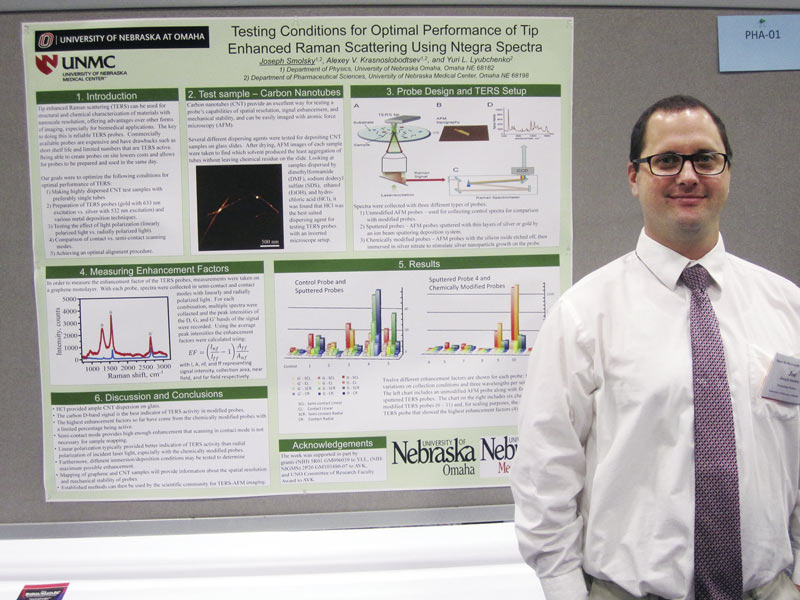Sigma Xi Annual Meeting and Student Research Conference
October 22, 2015 to October 25, 2015
Kansas City, MO
By:Joseph Smolsky
SPS Chapter:

Sigma Xi is an international scientific research community that welcomes researchers from all disciplines of science and engineering. When I heard they were having a national meeting with a student research conference, I decided to present some work I had done over the summer. It turned out to be a really fun trip.
The first night, I joined some Sigma Xi members at a “Science Behind the Beer” event at a local brewery near the hotel, where we learned about brewing beer. It was a great way to get things started.
The next morning was the student research conference. Most of the posters were presented by undergraduates, with a few high schoolers, graduate students, and professionals. I was one of only five students presenting research in physics. Our topics covered ultracold atoms, tetraquark decay, graphene films, spin gapless semiconductors, and tip-enhanced Raman scattering. We were joined by presenters from 10 other categories of research. The diverse and friendly crowd made this a great place to get some experience presenting research.
Among the professional poster presenters was Dr. Philip Baringer of Kansas University. His research is part of the Compact Muon Solenoid experiment at CERN’s Large Hadron Collider. The group at Kansas is involved in data analysis as well as the design, programming, and testing of a new detector. Dr. Baringer provided me with some valuable insight into this branch of physics.
After the student research conference, there were several informative events. First up was a talk by entomologist Dr. May Berenbaum entitled “Bee-nomics: Can Science Save the Honey Bee?” She discussed how colony collapse is putting honey bee populations in danger. Individuals can help by planting pollen- and nectar-producing flowers at home. Following the bee talk, I attended workshops on grant writing and the peer review process. Next up was headliner Dr. David Williams with “Seeing Through the Retina.” Dr. Williams discussed adaptive optics, a technique used by astronomers that his group is applying to the human eye, and the progress it is leading to in vision correction.
This was a fantastic experience. I learned about presenting research and met some great people. I encourage anyone who hasn’t looked into Sigma Xi to do so. It is an amazing community involved in a wide variety of scientific research across the globe. //
Areas of Alignment: Career Resources: Scientific Categories: